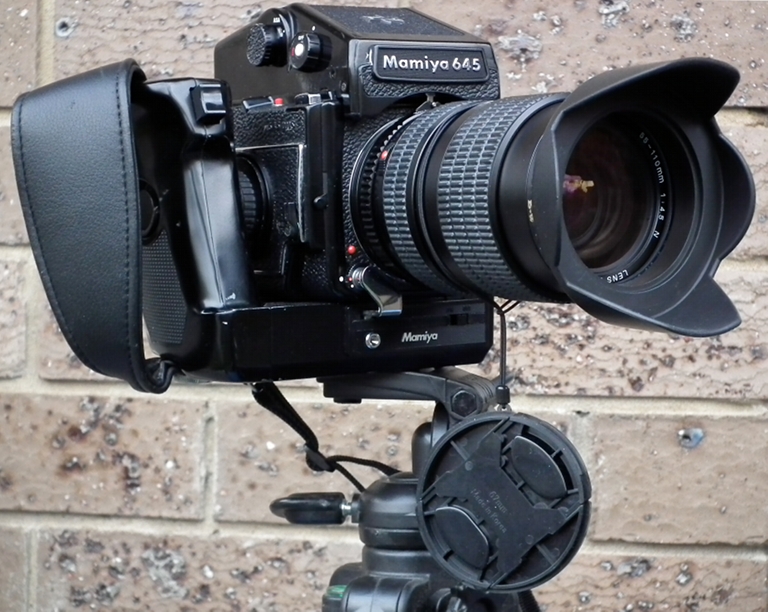 |
 |
 |
 |
 |
 |
 |
 |
 |
 |
 |
| Last Updated: Thu Jul 14 11:51:52 UTC 2016 |
 |
 |
 |
 |
 |
 |
 |
 |
 |
 |
 |
| Last Updated: Thu Jul 14 11:51:52 UTC 2016 |
| Mamiya 645 Lens Sample Imagery |
|
Photos
and
text © 1997 - 2013 Carlo
Kopp;
Photographs
produced
using
a Mamiya M645/1000S, 645AFD or Nikon D90, film scans Noritsu QSS
1300 PPI / 6
MP; almost all images produced in acceptance test or validation shoots.
Note: If you wish to view EXIF metadata in the DSLR images, the simplest solution is the FxIF Firefox extension. Please note that the focal length and aperture settings in the EXIF data reflect the configuration of the Legacy2Digital modified Fotodiox adaptor, not the focal length and instantaneous aperture setting on the actual lens, which is used in stop-down mode. This is because there is no means for these manual lens designs to communicate their status and identity to the adaptor chipset. |
|
Mamiya 645AFD Lens Performance Data |
 Mamiya medium format photographic
equipment was and is designed for professional users, and has a well
earned reputation for robust and durable construction, as well as
excellent optical quality. The company is best known for the RB/RZ
studio cameras, and the more portable 645 format series. I procured my
first 645 equipment in late 1984, and have continued to use it, with
film initially, and more recently I have been using Mamiya manual focus
lenses on Nikon DSLR bodies. Generally Mamiya equipment compares
closely to its contemporary European Hasselblad and Zeiss/Contax
equipment, but is usually much less costly. Older manual focus lenses
are compatible with newer autofocus bodies, but must be used in manual
focus stop-down mode. Recent Mamiya bodies, such as the 645AFD series,
have removable film backs, and are compatible with a wide range of
digital backs.
At this time used manual focus lenses for Mamiya 645 equipment are surprisingly affordable, at a small fraction of the cost of new or used autofocus versions of the same lenses - many excellent examples can be bought for under $100. The high optical quality and durability of these lenses, and their compatibility with all Mamiya bodies, as well as modern DSLRs via adaptors, make them an excellent yet economical means of acquiring genuine professional grade capability. For low production volume users this is a viable strategy. The Sekor C series lenses are the most widely available, with primes spanning 35 mm out to 500 mm, with two zoom lenses also available. Many of the more recent AF series lenses are optically identical to the Sekor C series. Less available and more expensive are the Sekor A series apochromatic lenses, which deliver peak centre sharpness in the 80 - 120 lines/mm range, and were built for a limited range of focal lengths, between 200 mm and 500 mm. Most of the Sekor C series lenses have peak centre sharpness performance of 75 - 80 lines/mm, common for upper tier medium format professional glass, and well above many professional and semi-professional SLR/DSLR primes of similar focal lengths. The latter makes these older lenses very attractive for use with newer 20+ Megapixel bodies, moreso since Full Frame and APS-C format sensors do not see the lens corners - a medium format lens which is at the bottom of the QA spec for its type, with soft corners, may still deliver spectacular performance on a DSLR body. The optical design of Mamiya primes usually puts peak sharpness and contrast at very low f-stop values, although some of the telephoto primes actually deliver best sharpness wide open. Given the heavy use of Mamiya equipment for studio work, especially portraiture and fashion, this should not be surprising, as it permits the subject to be rendered with high sharpness against a soft background, providing very strong depth cues in the image. This idiosyncrasy in lens optimisation is very useful for many specialist areas of work, such as aviation and some nature shooting. It also demands very precise manual focussing technique, which can be especially challenging with radially moving targets. |
 Sekor A 200 mm f/2.8 APO Lens mounted on a Nikon D90 with a Fotodiox Pro adaptor, April, 2011 (HS10 10 MP). Mamiya
645AFD with the 55-110 mm f/4.5 AF zoom lens (HS10 10 MP).
Sekor A 200 mm f/2.8 APO Lens mounted on a Mamiya 645AFD, October, 2010 (HS10 10 MP).  Mamiya M645/1000S with the Sekor C 55-110 mm f/4.5N zoom lens (HS10 10 MP).  A 2011
acquisition was a Fotodiox
Mamiya/Nikon adaptor modified by Legacy2Digital in the US with a
digital emulator chip, which presents the lens to the camera body as a
Nikon device. It is preprogrammed to represent the 200 mm f/2.8 APO
with the proper focal length and maximum aperture. This enables the
full range of automated features in a Nikon body, in this instance a
D90.
|
| Photos and text © 1997 - 2013 Carlo Kopp |
|
|
|
|||||||||||||||
| Artwork and text ż 1994 - 2010 Carlo Kopp; All rights reserved. |
| $Revision: 2.279 $ |